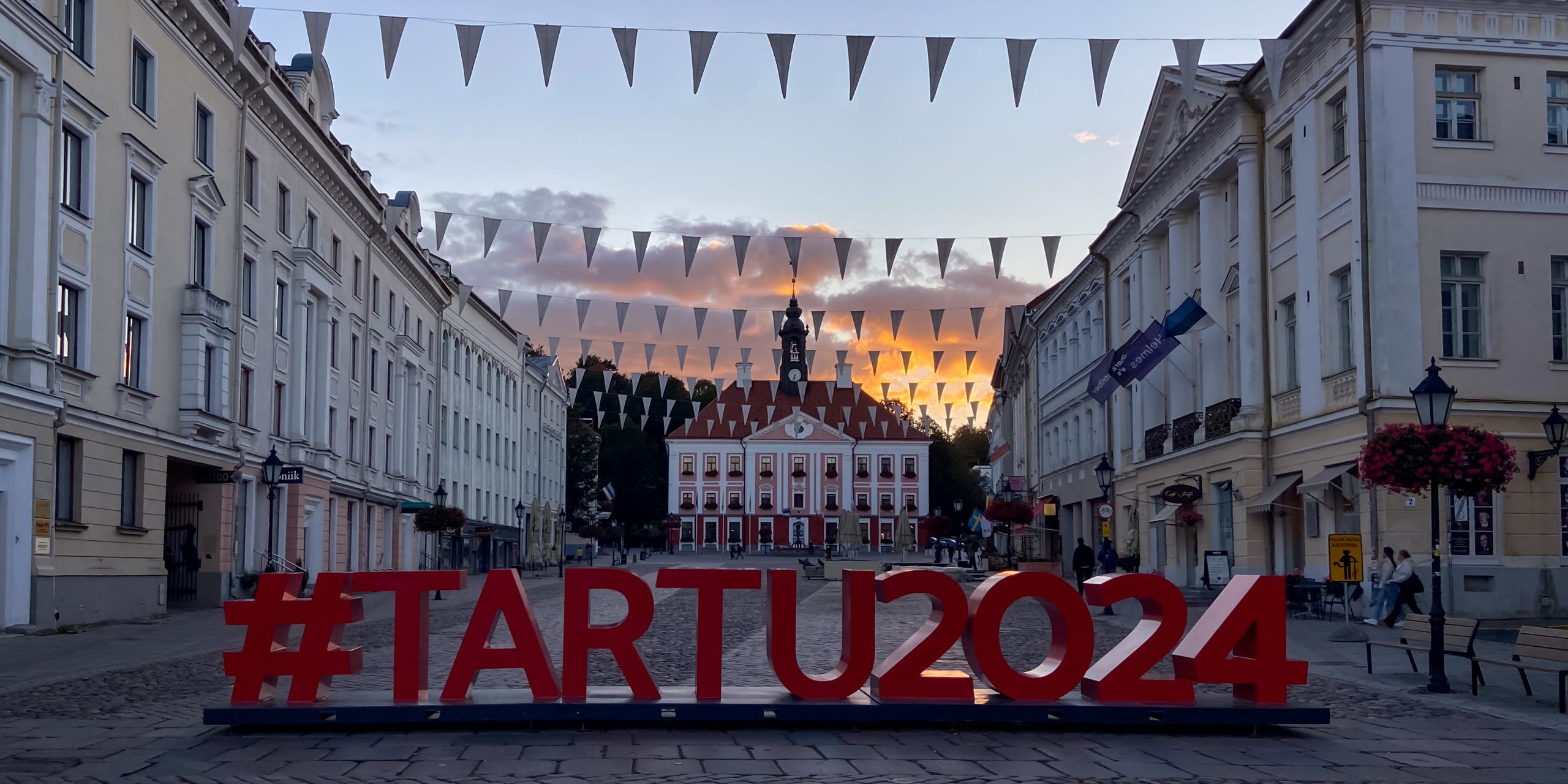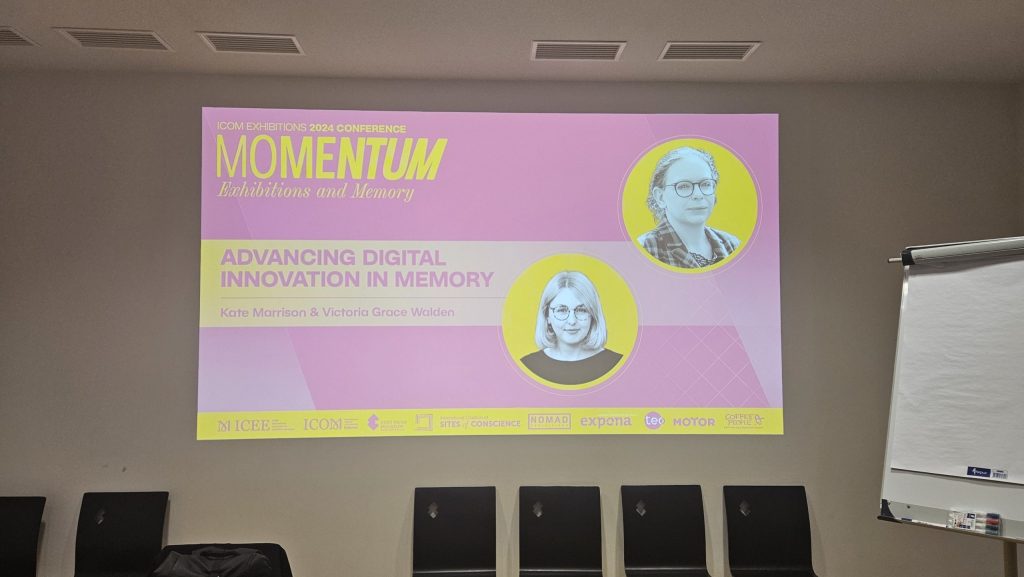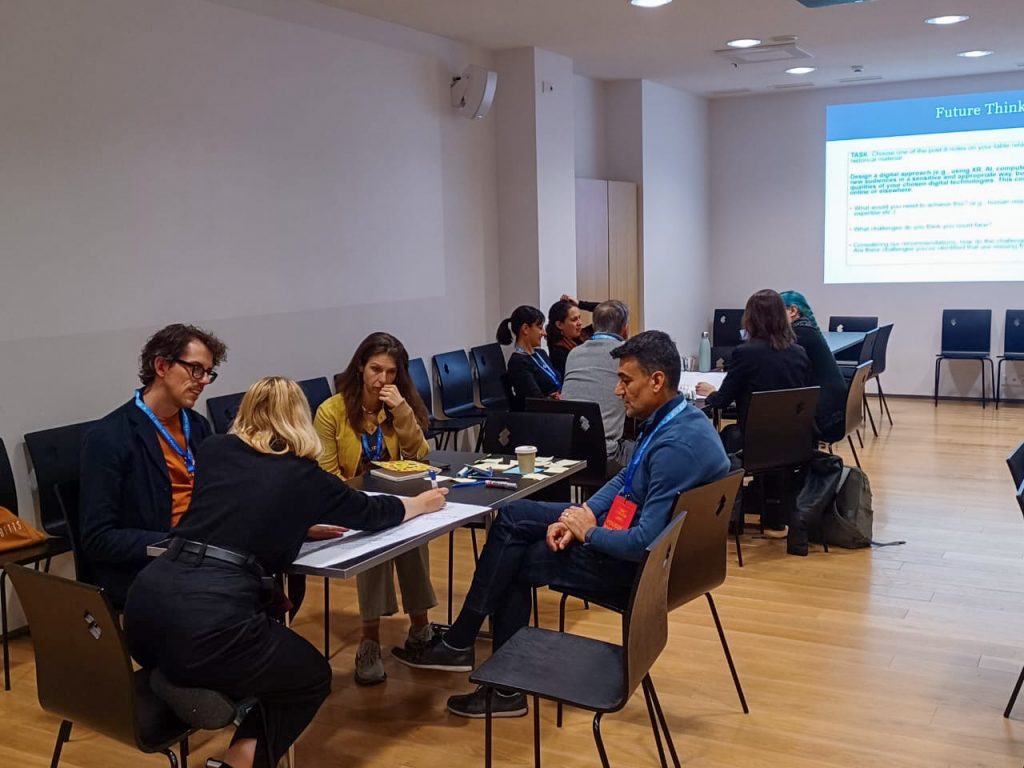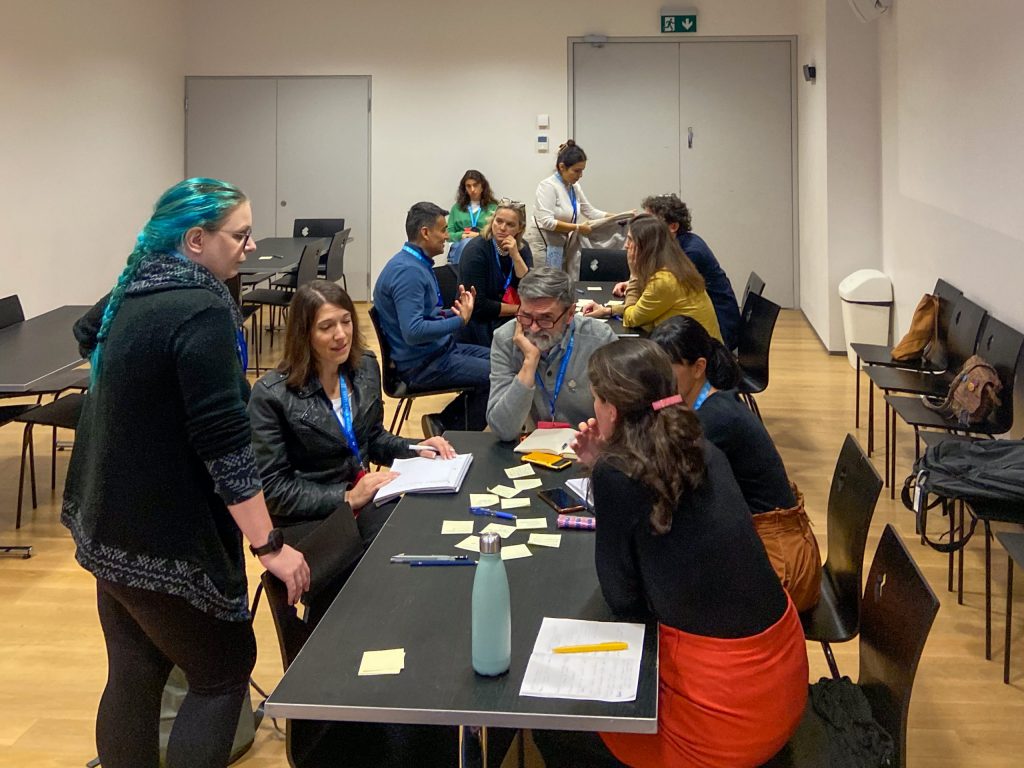
‘Momentum’ 2024: Advancing Digital Innovation in Memory
By Dr Victoria Grace Richardson-Walden
There is a tension between digital innovation and presenting difficult, sensitive and traumatic histories and memories. Here we report on the impact of the workshop we held in Tartu, Estonia, encouraging museum practitioners to consider how to navigate this tension.
We were grateful to be invited to contribute to the major international conference of the International Committee of Museums (ICOM) Exhibitions, not least because it gave us the opportunity to take our research beyond Holocaust organisations for the first time.

‘Momentum: Exhibitions and Memory’ (29 September – 2 October 2024) took place in Tartu, Estonia and was hosted by ICOM Exhibitions, along with ICEE (International Committee for Exhibition Exchange), ICSC (International Coalition of Sites of Conscience) and the Eesti Rahva Muuseum (the Estonian National Museum).
Tartu is this years’ European Capital of Culture, which bolstered the quality of exhibitions and tours we were welcomed to attend as part of the conference programme.
The conference had three themes:
- memory and the future of museums
- the intersection of memory, innovation, and exhibitions
- how do exhibitions shape memory?
Our workshop engaged with the second of these themes, focusing on the intersection of digital innovation and difficult, sensitive and traumatic histories and memories in exhibition spaces. It was interesting to observe no Holocaust museums were present at this major exhibitions conference, and few are members of the ICSC.

Yet, as the conference exposed, there are so many points of intersection in thinking through how to exhibit traumatic memory and violent pasts across different contexts. So much learning can be achieved by listening to those working with different histories.
Participants, who have worked across a range of contexts from North America to the Middle East, the Baltics to Rwanda, joined us to listen to our research about digital Holocaust memory. We then worked in teams to design digital exhibitions related to sensitive historical material.
We started the workshop by asking participants to add post-it notes to both sides of the room. On one side, we wanted digital technologies they had used or seen in museum exhibitions. On the other side, we wanted examples of sensitive, traumatic or difficult materials in their collections or that they had seen in exhibitions.
Then, after introducing our research, we asked each table to pick a post-it note from each side and think through the process of developing an exhibit that combined the two.
If the first group took the task as a more philosophical challenge, the second took a more practical approach. They considered the tensions between the ‘slow time’ of museums and the ‘fast time’ of digital innovation.
One group focused on the topic of indigenous reparations in Canada, whilst the other took a more microscopic approach and considered what to do – digitally – with the shoes of child victims of persecution.

Indigenous reparations
This group focused on challenges for the museum if they were to repatriate physical objects from a collection to the indigenous communities to whom they belong.
They thought through an idea of an augmented reality app where users could select digital-only objects – simulations of those returned – from the physical exhibition to save into their own curatorial space on the app.
The app would then encourage them to engage with the various curational questions the group were struggling with themselves: is it ethical to ‘save’ these digitally or does this perpetuate colonial logics of collecting and notions of ‘othering’ that are dominant in traditional ethnographic exhibitions?
They considered crowdsourcing in developing content for the app, working with indigenous communities and adding substantial complementary archival and research content to help users come to informed decisions.
The app would be less about display and more about engaging visitor-users in critical thinking and the complexity of these decisions. The app experience could finish with a coda that allowed them to see short videos of curators, members of the indigenous communities, and others talking about what decision they would have made.
The group considered how the app’s user-generated content could become part of an exhibition itself, with visitor-users thinking through curatorial decisions and the museum then professionalising their contributions by presenting it back to the wider public and inserting it into the physical exhibition space.
A Child’s Shoe (or Children’s Shoes?)
One of the challenges the second group faced in capturing 3D-scans of a shoe (or several shoes) was: should they focus on a single story offering the potential for personalisation, so that among an anonymous hoard of shoes, visitors can empathise with one individual’s reality? Or could they use digital technology to tell multiple stories?
If the first group took the task as a more philosophical challenge – questioning curatorial logics – the second took a more practical approach, considering resourcing. For example, they discussed the tension between the ‘slow time’ of museums and the ‘fast time’ of digital innovation.
They questioned how to ensure the longevity of the app – maintenance, digital obsolescence and rapid changes which can soon make something cutting edge look dated.
They also thought about the challenges of funders wanting products out in the exhibition space quickly with many short-term grants. In contrast, they saw the benefit in this being a long-term project which evolved over time through prototyping and user testing.
The group discussed how grant applications can be rigid, requiring robust timelines, ignoring the fact that there is much benefit in experimentation and learning from failure – an opportunity that many museums do not seem to get!
Conscious of a discussion that arose early on in the workshop about working with external partners and not having control of how visitor data is used (particularly relevant in times of war), the group decided the project should be developed in-house, supported by the creation of a permanent team with the appropriate digital expertise.
They would also make sure curators, archivists, communities related to the victim group(s), marketing teams and other stakeholders were involved as equals from the beginning. It came to light that often, some teams are brought in as an afterthought or not included at all. The group agreed that museums can make the best of their materials and human resources by bringing everyone together in a collaborative environment.
Take aways
We asked participants what they could take away from our session to think about in their own practice. Their responses included:
- don’t pretend to have all the answers
- be realistic with funders and senior stakeholders about your needs
- get buy-in across the organisation, and at all levels
- bring in different points of view to digital projects
- complexity related to traumatic material is challenging
- find strategies to crowd source
- the workshop was a reminder of how far we still have to go in advancing our practice around display
- digital exposes structural issues that other media camouflage
- learn from the experience of others and share time, expertise, and technology
- foreground critical thinking for visitors to help them interrogate complex histories and understand multiple viewpoints
- idea of play/games and traumatic history – are all games fun?
- consider the personal data that apps and other digital engagements require museum visitors to give
What to Know More?
Read our blogs on:
The Melbourne Holocaust Museum
Interactivity in Holocaust Memory
Finding Virtuality in Virtual Holocaust Museums
and our Recommendations for Digital Interventions in Holocaust Memory and Education